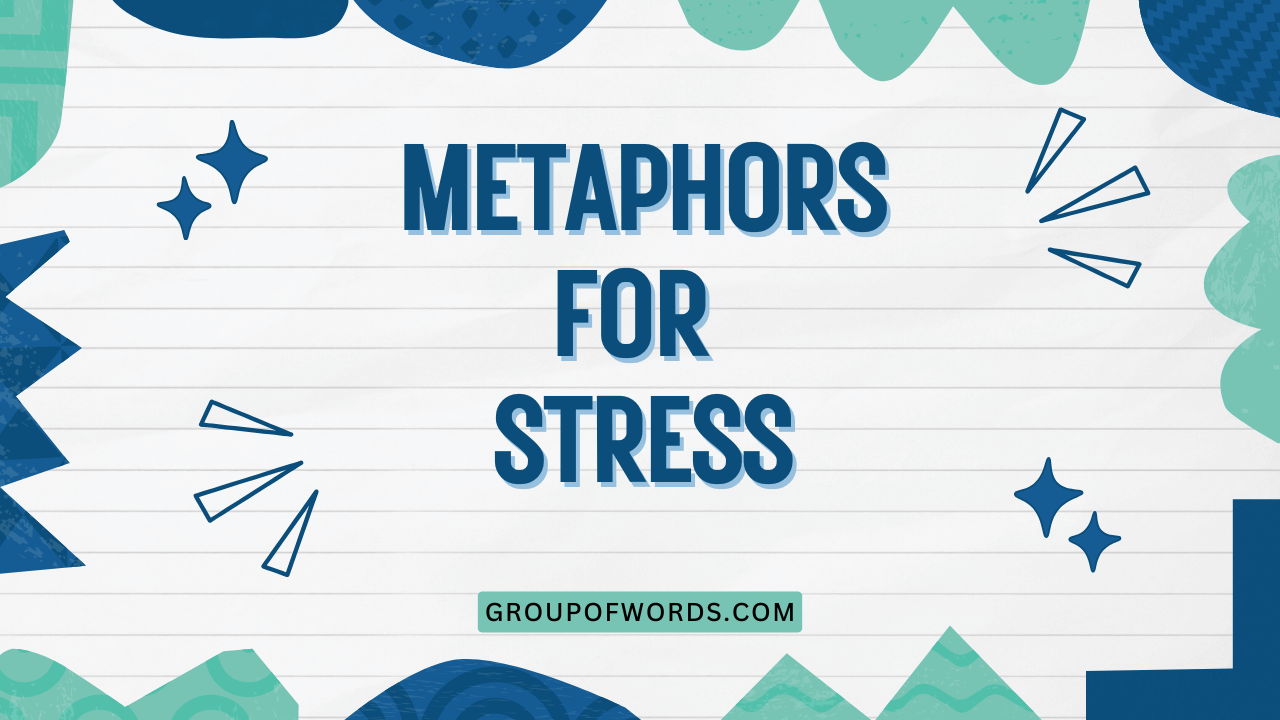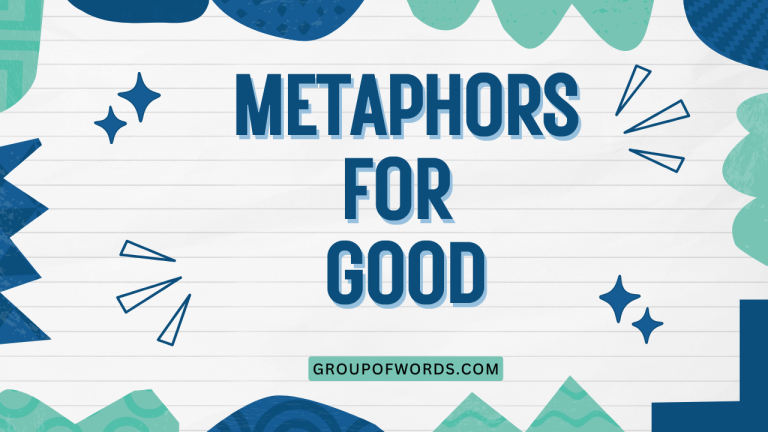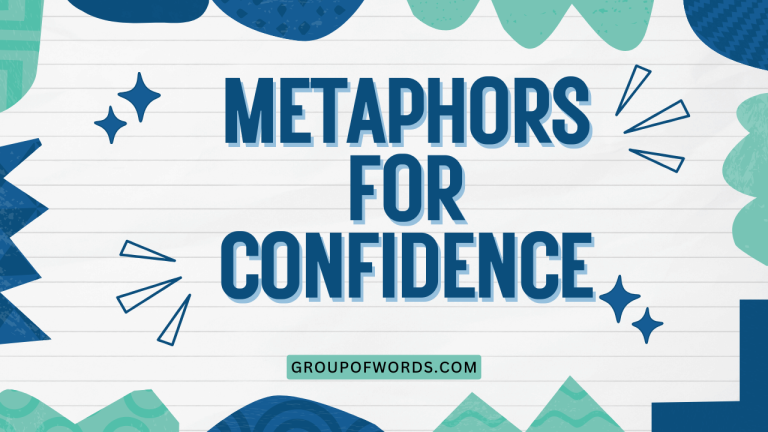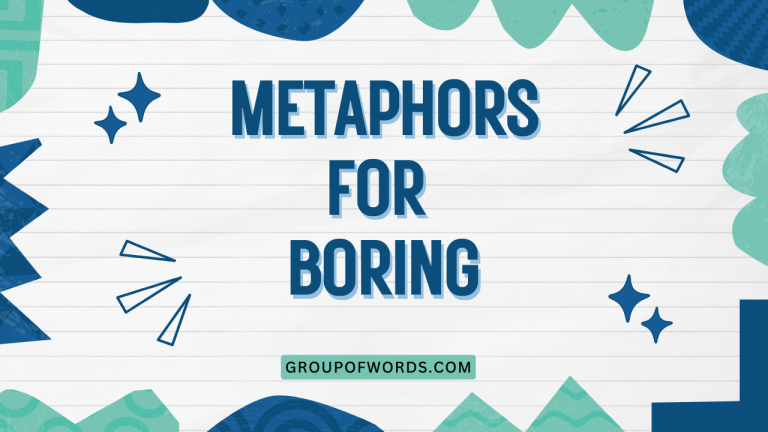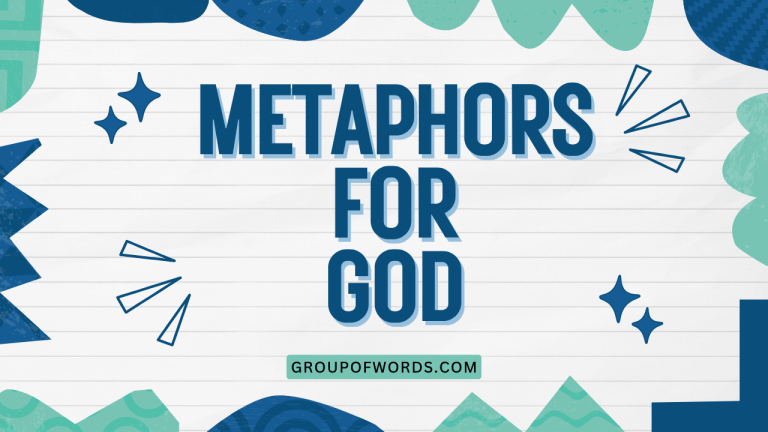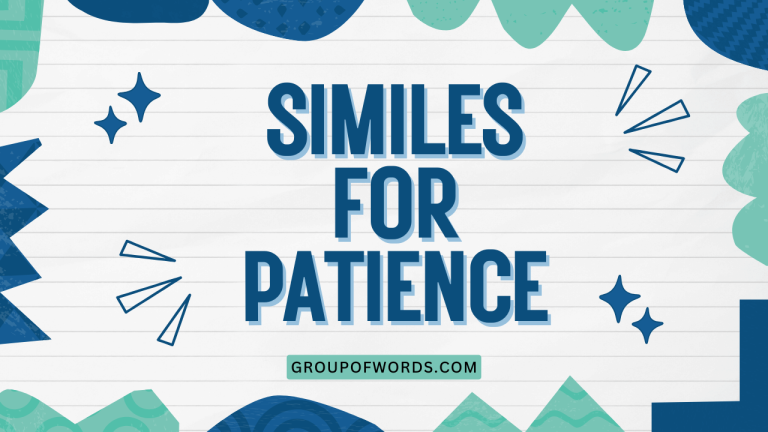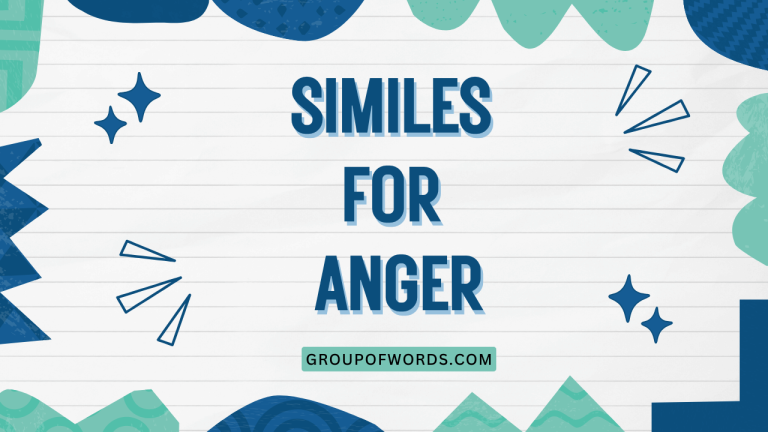Stress Metaphors: A Comprehensive Guide to Understanding & Usage
Stress is a ubiquitous part of modern life, and understanding how we talk about it is crucial for managing it effectively. This article delves into the fascinating world of stress metaphors, exploring how we use figurative language to conceptualize and communicate our experiences of stress.
By understanding these metaphors, we can gain deeper insights into our own stress responses and develop more effective coping strategies. This guide is designed for English language learners, educators, and anyone interested in the power of language to shape our understanding of complex emotions.
Table of Contents
- Introduction
- What are Stress Metaphors?
- Structural Breakdown of Stress Metaphors
- Types of Stress Metaphors
- Examples of Stress Metaphors
- Usage Rules for Stress Metaphors
- Common Mistakes When Using Stress Metaphors
- Practice Exercises
- Advanced Topics in Stress Metaphors
- Frequently Asked Questions
- Conclusion
Introduction
Stress is a complex physiological and psychological response that affects millions worldwide. We often struggle to articulate the intricate feelings and sensations associated with stress directly.
Consequently, we rely on metaphors – figures of speech that transfer meaning from one concept to another – to help us understand and express our experiences. Stress metaphors are not merely linguistic devices; they shape how we perceive, react to, and ultimately manage stress.
This article aims to provide a comprehensive overview of stress metaphors, covering their definition, structure, types, usage rules, common mistakes, and advanced applications. By exploring the language of stress, we can unlock valuable insights into our own well-being and improve our communication about this vital aspect of human experience.
What are Stress Metaphors?
Stress metaphors are figures of speech that use one concept (the source domain) to describe another (the target domain) – in this case, stress. They allow us to conceptualize the abstract and often overwhelming experience of stress in more concrete and relatable terms.
Metaphors are not literal; they create an implied comparison, highlighting certain aspects of stress while downplaying others. They function as cognitive tools, helping us to make sense of something that can feel intangible and difficult to define.
The use of metaphors in describing stress is pervasive in everyday language, reflecting its deep integration into our understanding of this phenomenon.
Metaphors are classified as a type of figurative language, which also includes similes, analogies, and personification. While similes use words like “like” or “as” to make a direct comparison (e.g., “I feel like I’m drowning in work”), metaphors imply the comparison without these explicit terms (e.g., “I’m drowning in work”).
Understanding the difference between these figures of speech is crucial for identifying and interpreting stress metaphors effectively.
The function of stress metaphors extends beyond mere description. They influence our emotional responses and coping mechanisms.
For example, if we conceptualize stress as a “battle,” we might adopt a more combative and aggressive approach to managing it. Conversely, if we view stress as a “burden,” we might focus on seeking support and lightening our load.
The metaphors we use can therefore have a profound impact on our well-being.
Structural Breakdown of Stress Metaphors
The structure of a metaphor involves two key elements: the source domain and the target domain. The source domain is the concept used to describe the target domain. In the context of stress metaphors, the target domain is always stress, while the source domain can vary widely. For example, in the metaphor “Stress is a weight on my shoulders,” the source domain is “weight,” and the target domain is “stress.” The metaphor works by mapping attributes of the source domain (e.g., heaviness, pressure) onto the target domain (e.g., the feeling of being overwhelmed by stress).
Understanding the underlying structure of metaphors helps us to analyze their meaning and implications. We can break down a stress metaphor into its component parts to identify the specific aspects of stress that are being highlighted.
This analysis can reveal the assumptions and beliefs that inform our understanding of stress. For instance, the metaphor “Stress is a fire” suggests that stress is potentially destructive but also that it can be controlled or extinguished.
The effectiveness of a metaphor depends on the degree to which the source and target domains share relevant attributes. A strong metaphor resonates with our experiences and provides a vivid and insightful representation of the target concept.
A weak metaphor, on the other hand, may be confusing or irrelevant. The cultural context also plays a significant role in shaping the meaning and interpretation of metaphors.
Different cultures may use different metaphors to describe stress, reflecting their unique values and beliefs.
Types of Stress Metaphors
Stress metaphors can be categorized based on the source domain they draw upon. Here are some common types:
Stress as a Burden
This category frames stress as a heavy load or weight. It emphasizes the feeling of being weighed down, burdened, or overwhelmed.
Examples include: “Stress is a weight on my shoulders,” “I’m carrying the weight of the world,” and “I feel crushed by stress.”
Stress as a Force
This type of metaphor depicts stress as an external force exerting pressure or control. It highlights the feeling of being pushed, pulled, or driven by stress.
Examples include: “Stress is pushing me to the limit,” “I’m under immense pressure,” and “I feel like I’m being pulled in a million directions.”
Stress as a Container
This category uses the image of a container to describe stress. It focuses on the idea of stress building up inside, reaching a breaking point.
Examples include: “I’m bottling up my stress,” “I’m about to explode from stress,” and “I’m overflowing with stress.”
Stress as a Disease
This type of metaphor likens stress to an illness or ailment. It emphasizes the negative impact of stress on physical and mental health.
Examples include: “Stress is eating me alive,” “I’m sick with stress,” and “Stress is poisoning my life.”
Stress as a Storm
This category uses the imagery of a storm to represent stress. It highlights the chaotic, unpredictable, and overwhelming nature of stress.
Examples include: “I’m weathering a stressful storm,” “Stress is raging inside me,” and “I’m caught in a stress hurricane.”
Stress as a War
This type of metaphor frames stress as a battle or conflict. It emphasizes the feeling of being under attack, fighting for survival, or struggling against adversity.
Examples include: “I’m battling stress,” “I’m at war with my stress,” and “I’m losing the fight against stress.”
Examples of Stress Metaphors
The following tables provide extensive examples of stress metaphors, categorized by their type. Each table includes 20-30 examples to illustrate the diversity and range of these metaphors.
Table 1: Stress as a Burden
This table illustrates how stress is often described as a heavy load or burden that weighs individuals down, both physically and mentally.
| Example | Explanation |
|---|---|
| Stress is a heavy weight on my shoulders. | Implies that stress is a burden that is difficult to bear. |
| I’m carrying the weight of the world. | Suggests an overwhelming sense of responsibility and pressure. |
| I feel crushed by stress. | Conveys the feeling of being overwhelmed and defeated by stress. |
| The pressure is immense; it’s like carrying a ton of bricks. | Highlights the severity and physical sensation of stress. |
| My workload is a huge burden right now. | Directly compares the workload to a heavy load. |
| I’m weighed down by all the responsibilities. | Describes the feeling of being burdened by numerous obligations. |
| It feels like I’m drowning under a mountain of tasks. | Illustrates the overwhelming nature of tasks as a heavy mass. |
| The stress is a millstone around my neck. | A millstone is a heavy stone, signifying a constant and oppressive burden. |
| I’m shouldering a lot of responsibility at work. | Implies carrying a significant burden of duties and expectations. |
| Stress is like a backpack filled with rocks. | Compares stress to a heavy and cumbersome load on one’s back. |
| I feel like I’m sinking under the weight of my problems. | Suggests that problems are a heavy burden causing one to feel overwhelmed. |
| The bills are a heavy load to bear each month. | Highlights the financial stress as a recurring burden. |
| I’m struggling under the weight of expectations. | Indicates that expectations are a heavy burden to meet. |
| The constant worry is a heavy burden on my mind. | Describes the mental strain caused by persistent worry. |
| It’s a heavy cross to bear. | Implies enduring a significant and difficult burden in life. |
| I feel like I’m dragging around a ball and chain. | Suggests that stress is a constant impediment, hindering progress. |
| The past is a heavy weight I can’t seem to shake off. | Describes the burden of past experiences and memories. |
| I’m feeling the full weight of my decisions. | Highlights the consequences and burdens associated with one’s choices. |
| This project feels like a lead balloon. | Describes a project that is heavy, difficult to manage, and likely to fail. |
| I’m lugging around so much emotional baggage. | Describes the burden of carrying unresolved emotional issues. |
| I am carrying this team on my back. | Describes a situation where one person carries the majority of the workload. |
| The responsibility for my family is a huge weight. | Describes the burden of carrying the financial or emotional responsibility of a family. |
Table 2: Stress as a Force
This table provides examples of metaphors that portray stress as a powerful and often overwhelming force that impacts individuals.
| Example | Explanation |
|---|---|
| Stress is pushing me to the limit. | Implies that stress is exerting pressure, forcing one to their breaking point. |
| I’m under immense pressure. | Suggests being subjected to a great deal of stress and expectation. |
| I feel like I’m being pulled in a million directions. | Conveys the feeling of being pulled apart by competing demands. |
| I’m feeling the squeeze of deadlines. | Highlights the pressure exerted by impending deadlines. |
| Stress is bearing down on me. | Describes stress as a force pressing heavily upon someone. |
| I’m feeling the force of the competition. | Indicates the competitive environment as a source of pressure. |
| The demands are relentless. | Describes the unyielding and constant pressure from tasks and responsibilities. |
| I’m feeling the full brunt of the economic downturn. | Highlights the severe impact of the economic situation. |
| The pressure is mounting. | Suggests that stress is increasing and building up over time. |
| I feel like I’m being run over by a truck. | Conveys the feeling of being overwhelmed and crushed by stress. |
| Stress is driving me crazy. | Implies that stress is pushing one to the point of losing control. |
| I’m being bombarded with emails. | Describes the feeling of being overwhelmed by a large volume of messages. |
| I’m feeling the pinch of rising costs. | Highlights the financial strain caused by increasing expenses. |
| The constant scrutiny is wearing me down. | Describes the exhausting effect of constant observation and judgment. |
| I feel like I’m being stretched too thin. | Suggests that one’s resources and energy are being overextended. |
| The pressure to succeed is crushing. | Indicates the overwhelming stress associated with achieving success. |
| I’m being squeezed by the demands of work and family. | Highlights the pressure resulting from balancing multiple responsibilities. |
| The weight of expectations is overwhelming. | Describes the heavy burden and pressure caused by expectations. |
| I’m being tossed around by life’s challenges. | Suggests that challenges are a force that destabilizes and overwhelms. |
| The stress is like a vise grip around my head. | Describes the intense and constricting sensation of stress. |
| I feel like I am drowning in a sea of demands. | Expresses being overwhelmed by numerous requests. |
| The stress is like a tidal wave washing over me. | Describes an overwhelming surge of stress. |
Table 3: Stress as a Container
This table showcases metaphors where stress is likened to a container, emphasizing the build-up and potential for explosion or overflow.
| Example | Explanation |
|---|---|
| I’m bottling up my stress. | Implies that stress is being suppressed and contained internally. |
| I’m about to explode from stress. | Suggests reaching a breaking point due to accumulated stress. |
| I’m overflowing with stress. | Conveys the feeling of being overwhelmed and unable to contain stress. |
| I’m at my boiling point. | Highlights reaching a state of extreme anger or frustration due to stress. |
| I’m full of pent-up stress. | Describes the accumulation of suppressed stress. |
| I’m reaching my limit. | Indicates that one is nearing the point of exhaustion or breakdown. |
| I’m stuffed with anxiety. | Describes being filled with feelings of anxiety and worry. |
| I’m bursting with frustration. | Highlights the intense build-up of frustration due to stress. |
| I’m running on empty. | Suggests that one’s energy and resources are depleted. |
| I’m feeling drained from all the stress. | Conveys the feeling of being completely exhausted by stress. |
| I’m saturated with worry. | Describes being completely filled with feelings of worry. |
| I’m feeling the pressure cooker effect. | Highlights the build-up of stress in a confined environment. |
| I’m close to snapping. | Suggests being on the verge of losing control due to stress. |
| I’m at the end of my rope. | Indicates that one has exhausted all their resources and patience. |
| I’m reaching my saturation point. | Describes reaching a point where no more stress can be tolerated. |
| I’m filled to the brim with responsibilities. | Highlights being completely overwhelmed by numerous obligations. |
| I’m like a shaken soda bottle, ready to pop. | Conveys the feeling of being highly agitated and on the verge of explosion. |
| I’m holding it all in, but for how long? | Suggests suppressing stress but questioning the ability to continue doing so. |
| My patience is wearing thin. | Indicates that one’s tolerance for stress is decreasing. |
| I’m feeling stretched to my breaking point. | Describes being extended to the limit of endurance. |
| My mind is overflowing with thoughts. | Describes an overwhelming number of mental tasks. |
Table 4: Stress as a Disease
This table illustrates metaphors that equate stress with illness, highlighting its detrimental impact on health and well-being.
| Example | Explanation |
|---|---|
| Stress is eating me alive. | Implies that stress is consuming one’s physical and mental health. |
| I’m sick with stress. | Suggests that stress is causing physical and emotional illness. |
| Stress is poisoning my life. | Conveys the idea that stress is having a toxic and harmful effect. |
| Stress is a plague on my well-being. | Highlights the widespread and devastating impact of stress. |
| I’m feeling the debilitating effects of stress. | Describes the weakening and impairing consequences of stress. |
| Stress is a cancer, slowly growing inside me. | Compares stress to a disease that insidiously damages one’s health. |
| I’m infected with anxiety. | Suggests that anxiety is spreading and affecting one’s mental state. |
| Stress is a virus, spreading through my body. | Highlights the pervasive and contagious nature of stress. |
| I’m feeling the symptoms of burnout. | Describes experiencing the physical and emotional exhaustion caused by prolonged stress. |
| Stress is eroding my health. | Implies that stress is gradually damaging one’s physical and mental well-being. |
| I’m feeling the aftereffects of chronic stress. | Describes the long-term consequences of prolonged stress. |
| Stress is a silent killer. | Highlights the hidden and deadly impact of stress. |
| I’m feeling the toll of stress on my body. | Indicates the physical damage caused by stress. |
| Stress is a leech, sucking the life out of me. | Compares stress to a parasite that drains one’s energy and vitality. |
| I’m feeling the decay of stress on my mind. | Describes the deteriorating effect of stress on mental health. |
| Stress is a parasite, feeding off my energy. | Highlights the draining and debilitating nature of stress. |
| I’m feeling the wear and tear of stress on my nerves. | Describes the damaging impact of stress on the nervous system. |
| Stress is a malignant force in my life. | Conveys the harmful and destructive influence of stress. |
| I’m feeling the ache of stress in my muscles. | Describes the physical discomfort and tension caused by stress. |
| Stress is like a poison that slowly kills. | Describes the harmful long term effects of stress. |
Table 5: Stress as a Storm
This table provides examples of metaphors where stress is likened to a storm, emphasizing its chaotic, unpredictable, and overwhelming nature.
| Example | Explanation |
|---|---|
| I’m weathering a stressful storm. | Implies that one is enduring a difficult and challenging period of stress. |
| Stress is raging inside me. | Suggests that stress is intense and tumultuous, like a violent storm. |
| I’m caught in a stress hurricane. | Conveys the feeling of being overwhelmed and tossed around by stress. |
| I’m in the eye of the storm right now. | Highlights a brief period of calm amidst intense stress. |
| The storm of stress is brewing. | Describes the build-up and anticipation of a stressful period. |
| I’m being bombarded by stress. | Suggests being overwhelmed by a barrage of stressors. |
| The stress is like a thunderclap, sudden and shocking. | Describes the sudden and jarring onset of stress. |
| I’m navigating through a turbulent sea of stress. | Highlights the challenges and difficulties of dealing with stress. |
| The storm clouds of stress are gathering. | Describes the ominous signs indicating an impending stressful period. |
| I’m feeling the aftershocks of the stressful event. | Conveys the lingering effects of a stressful experience. |
| The stress is like a downpour, relentless and heavy. | Describes the constant and oppressive nature of stress. |
| I’m feeling the chill of stress in my bones. | Suggests that stress is causing a deep and pervasive feeling of unease. |
| The winds of stress are howling around me. | Highlights the intense and disruptive nature of stress. |
| I’m being swept away by the flood of stress. | Conveys the feeling of being overwhelmed and helpless in the face of stress. |
| The stress is like a blizzard, blinding and disorienting. | Describes the overwhelming and confusing nature of stress. |
| I’m battening down the hatches to prepare for the stress. | Implies taking precautions to protect oneself from impending stress. |
| The stress is like lightning, striking without warning. | Highlights the sudden and unexpected nature of stress. |
| I’m feeling the weight of the storm clouds of stress. | Describes the heavy burden and pressure caused by stress. |
| The stress is like a hurricane tearing through my life. | Describes the destructive impact of stress on one’s life. |
| I am trying to remain afloat in this storm of stress. | Describes the act of attempting to maintain a sense of control. |
Usage Rules for Stress Metaphors
While stress metaphors are a powerful tool for communication, it’s important to use them effectively and appropriately. Here are some guidelines:
- Clarity: Choose metaphors that are clear and easily understood by your audience. Avoid obscure or overly complex metaphors that may confuse or alienate listeners.
- Relevance: Select metaphors that accurately reflect the specific aspects of stress you want to emphasize. Consider the context and choose metaphors that resonate with the experiences of your audience.
- Consistency: Maintain consistency in your use of metaphors. Avoid mixing metaphors from different categories, as this can create confusion and undermine the effectiveness of your communication.
- Sensitivity: Be mindful of the potential impact of your metaphors on others. Avoid using metaphors that may be offensive, insensitive, or stigmatizing.
- Context: Ensure that the metaphor is appropriate for the context of the conversation or writing. A metaphor that works well in a casual conversation may not be suitable for a formal presentation.
Exceptions and Special Cases:
In some cases, it may be appropriate to use mixed metaphors for stylistic effect. However, this should be done intentionally and with careful consideration of the potential for confusion.
Additionally, certain metaphors may be more appropriate in specific cultural contexts. It’s important to be aware of these cultural nuances and adapt your language accordingly.
Common Mistakes When Using Stress Metaphors
Here are some common mistakes to avoid when using stress metaphors:
- Mixing Metaphors: Combining metaphors from different categories can create confusion and undermine the effectiveness of your communication.
- Incorrect: “I’m drowning in work, and it’s eating me alive.” (Mixing “drowning” and “eating alive”)
- Correct: “I’m drowning in work.” OR “Stress is eating me alive.”
- Using Clichéd Metaphors: Overusing common metaphors can make your language sound stale and unoriginal. Try to find fresh and creative ways to express your ideas.
- Clichéd: “Stress is a killer.”
- More Original: “Stress is a silent saboteur, undermining my well-being.”
- Using Inappropriate Metaphors: Choosing metaphors that are insensitive or offensive can damage your credibility and alienate your audience.
- Inappropriate: “Stress is like a walk in the park.” (When describing severe stress)
- Appropriate: “Stress feels like navigating a minefield.”
- Overusing Metaphors: Too many metaphors can make your language sound forced and unnatural. Use metaphors sparingly and strategically to enhance your communication.
- Overuse: “I’m battling a storm of stress, feeling the weight of the world while drowning in deadlines.”
- Better: “I’m battling a storm of stress due to looming deadlines.”
Practice Exercises
Exercise 1: Identifying Stress Metaphors
Identify the stress metaphor in each sentence and categorize it based on the types discussed earlier (Burden, Force, Container, Disease, Storm, War).
| Question | Answer |
|---|---|
| 1. I feel like I’m carrying a mountain on my back. | Burden |
| 2. The pressure at work is about to make me explode. | Container |
| 3. Stress is eating away at my peace of mind. | Disease |
| 4. I’m weathering a terrible storm in my personal life. | Storm |
| 5. I’m battling constant anxiety every day. | War |
| 6. The weight of my responsibilities is crushing me. | Burden |
| 7. I’m reaching my breaking point with all this stress. | Container |
| 8. Stress is slowly poisoning my relationships. | Disease |
| 9. I feel like I’m drowning in a sea of obligations. | Force |
| 10. I’m fighting an uphill battle against stress. | War |
Exercise 2: Using Stress Metaphors
Complete the following sentences using an appropriate stress metaphor.
| Question | Answer |
|---|---|
| 1. With the deadline approaching, the pressure is ____. | mounting |
| 2. I’m feeling ____ by all the demands on my time. | stretched thin |
| 3. My anxiety is ____, making it hard to focus. | raging |
| 4. After months of stress, I feel completely ____. | drained |
| 5. The constant worry is a ____ on my mind. | burden |
| 6. I’m trying not to ____ my stress, but it’s hard. | bottle up |
| 7. The stress from the job loss is ____ me alive. | eating |
| 8. This stress feels like a ____ on my shoulders. | weight |
| 9. I can’t wait to ____ this stressful period. | weather |
| 10. The stress is like a ____ around my head. | vise grip |
Exercise 3: Correcting Misused Metaphors
Identify and correct the misused or mixed metaphors in the following sentences.
| Question | Answer |
|---|---|
| 1. I’m battling a storm of stress while drowning in deadlines. | I’m battling a storm of stress because of the deadlines. |
| 2. The pressure is a heavy weight that’s eating me alive. | The pressure is a heavy weight that’s hard to bear. OR Stress is eating me alive. |
| 3. I’m at the end of my rope, but I’m also pushing through it. | I’m at the end of my rope. OR I’m pushing through this difficult time. |
| 4. The stress is a virus, but I’m also carrying the weight of it. | The stress is a virus that’s affecting my health. OR I’m carrying the weight of my stress. |
| 5. I feel like I’m exploding with pressure, and it’s crushing me. | I feel like I’m exploding with pressure. OR The pressure is crushing me. |
| 6. I’m navigating a storm while feeling the pinch of deadlines. | I’m navigating a storm of challenges. OR I’m feeling the pinch of looming deadlines. |
| 7. Stress is a silent killer that’s also bearing down on me. | Stress is a silent killer. OR Stress is bearing down on me. |
| 8. I’m bottling up my stress, but it’s also eating me alive. | I’m bottling up my stress, trying to stay strong. OR Stress is eating me alive, and I need to address it. |
| 9. The worry is a millstone, and I’m sinking under the force of it. | The worry is a millstone around my neck. OR I’m sinking under the force of my worries. |
| 10. I’m fighting a battle with stress while also reaching my boiling point. | I’m fighting a battle with stress. OR I’m reaching my boiling point because of stress. |
Advanced Topics in Stress Metaphors
For advanced learners, exploring the cultural and psychological implications of stress metaphors can provide deeper insights. Different cultures may use distinct metaphors to describe stress, reflecting their unique values and beliefs about mental health.
For example, some cultures may emphasize the physical manifestations of stress, while others may focus on its emotional impact. Understanding these cultural differences can improve intercultural communication and sensitivity.
Furthermore, the metaphors we use to describe stress can influence our coping mechanisms and attitudes towards seeking help. If we view stress as a personal failing, we may be less likely to seek support.
Conversely, if we see stress as a common human experience, we may be more open to seeking help and developing effective coping strategies. Exploring the psychological implications of stress metaphors can empower us to make more informed choices about our mental health and well-being.
The study of metaphor is closely tied to cognitive linguistics, a field that explores the relationship between language and thought. Cognitive linguists argue that metaphors are not merely linguistic devices, but fundamental cognitive structures that shape our understanding of the world.
By studying the metaphors we use to describe stress, we can gain valuable insights into the cognitive processes that underlie our experience of this complex emotion.
Frequently Asked Questions
- What is
is the difference between a simile and a metaphor?
A simile uses “like” or “as” to make a direct comparison (e.g., “I feel like I’m drowning in work”), while a metaphor implies the comparison without these explicit terms (e.g., “I’m drowning in work”).
- Why are metaphors useful in describing stress?
Metaphors help us conceptualize the abstract experience of stress in more concrete and relatable terms, making it easier to understand and communicate.
- Can the metaphors we use to describe stress affect our well-being?
Yes, the metaphors we use can influence our emotional responses, coping mechanisms, and attitudes towards seeking help.
- Are there cultural differences in the way stress is described metaphorically?
Yes, different cultures may use distinct metaphors to describe stress, reflecting their unique values and beliefs about mental health.
- What should I do if I find myself using clichéd stress metaphors?
Try to find fresh and creative ways to express your ideas, drawing upon your own experiences and observations.
Conclusion
Stress metaphors are a powerful tool for understanding and communicating about stress. By recognizing the different types of stress metaphors, using them effectively, and avoiding common mistakes, we can improve our communication about stress and gain deeper insights into our own experiences.
Understanding the cultural and psychological implications of stress metaphors can further enhance our ability to manage stress and promote well-being. As language learners and communicators, mastering the art of using stress metaphors is a valuable skill that can empower us to navigate the challenges of modern life with greater clarity and resilience.
